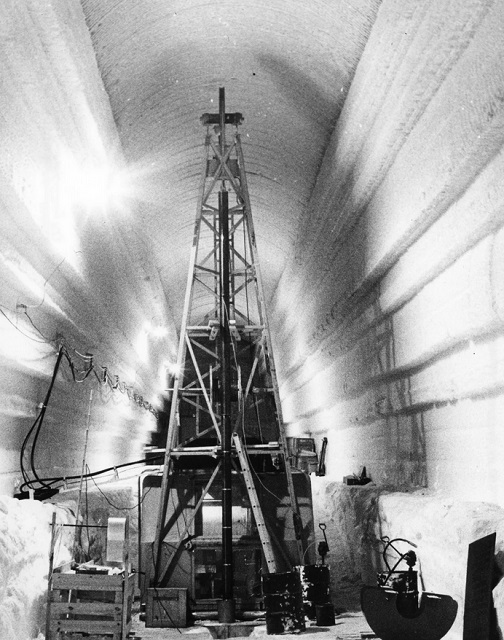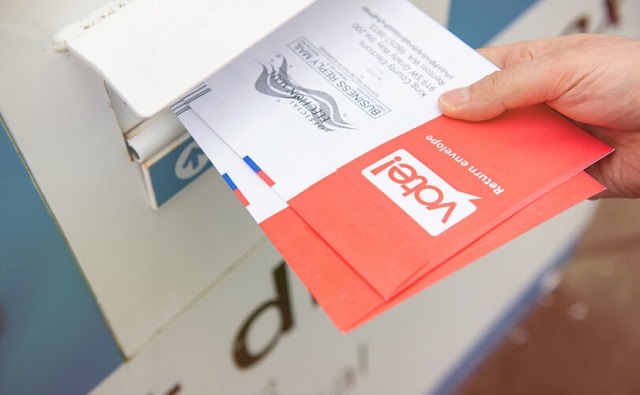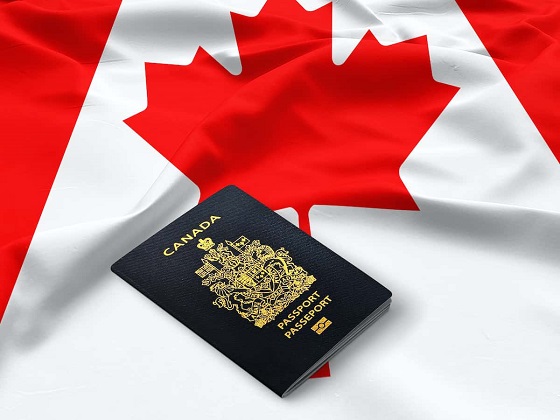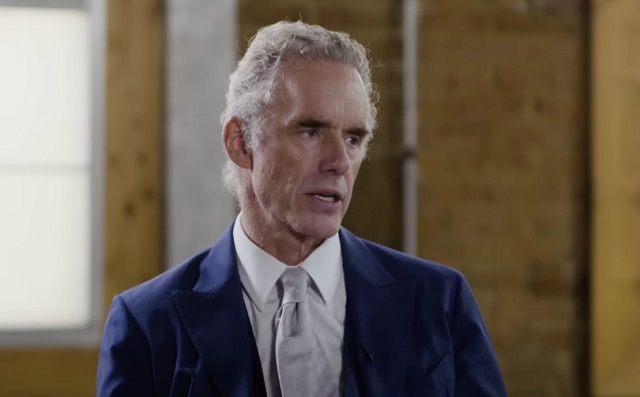Economy
Abandoned Greenland ice base calls co2 concerns into question

Wired.com had another story with a climate change hook on July 20 called, “An Abandoned Arctic Military Base Just Spilled a Scientific Secret.” It began “During the Cold War, the US built a network of tunnels in the Greenland ice sheet. Sixty years later, the base has provided a critical clue about the climate crisis.”
From 1959 to 1966, Project Iceworm in Greenland was meant to establish military bases in caverns carved out of glacial ice, with Camp Century being the trial run. The plan was to locate as many as 600 intercontinental ballistic missiles in under-ice caverns, invisible to the Soviets, and within striking range of the USSR.
However, the project never did work out and it was terminated in 1966.
The climate angle comes out of what was discovered in remarkable ice core the military drilled through the glacier.
The Wired article said that researchers drilled a 4,550-foot-deep core through the ice sheet, and when they hit earth, they drilled another 12 feet, bringing up a plug of frozen sand, dirty ice, cobbles, and mud.
It continued, “Nobody cared much about the sediment, though, until 2018, when it was rediscovered in … a University of Copenhagen freezer.” Now, an international team of researchers has analyzed that sediment, and made a major scientific discovery.
“In that frozen sediment are leaf fossils and little bits of bugs and twigs and mosses that tell us in the past there was a tundra ecosystem living where today there’s almost a mile of ice,” says University of Vermont geoscientist Paul Bierman, coauthor of a new paper describing the finding in the journal Science. “The ice sheet is fragile. It can disappear, and it has disappeared. Now we have a date for that.”
Wired wrote, “Previously, scientists reckoned that Greenland iced over some 2.5 million years ago, and has been that way since. In 2021, Bierman and his colleagues determined that it was actually ice-free sometime in the past million years. Now, they’ve dated the tundra ecosystem captured in the Camp Century core to a mere 416,000 years ago—so northwestern Greenland couldn’t have been locked in ice then.”
And here’s where the mental gymnastics take place: Scientists also know that at that time, global temperatures were similar or slightly warmer than what they are today. However, back then, atmospheric concentrations of planet-warming carbon dioxide were about 280 parts per million, compared to today’s 422 parts per million—a number that continues to skyrocket.”
The article continued, “Because humans have so dramatically and rapidly warmed the climate, we’re exceeding the conditions that had previously led to the wide-scale melting of Greenland’s ice sheet and gave rise to the tundra ecosystem. “It’s a forewarning,” says Utah State University geoscientist Tammy Rittenour, a coauthor of the new paper. “This can happen under much lower CO2 conditions than our current state.”
Whoa, there, Nelly! You’re telling me that carbon dioxide levels were a full third less than they are today, and yet the northernmost portions of Greenland (the most likely to freeze) was tundra? Greenland did not have the better part of a mile of ice covering it when CO2 was well below the supposedly crucial threshold of 350 parts per million?
Indeed, the article goes on to say, “That melting [of all the Greenland ice] could be incredibly perilous. The new study finds that the Greenland ice melt 400,000 years ago caused at least 5 feet of sea level rise, but perhaps as much as 20 feet. “These findings raise additional concern that we could be coming perilously close to the threshold for collapse of the Greenland ice sheet and massive additional sea level rise of a meter or more,” says University of Pennsylvania climate scientist Michael Mann, who wasn’t involved in the research. Today, less than a foot of global sea level rise is already causing serious flooding and storm surge problems for coastal cities—and that’s without the potential for an additional 20 feet.”
Again, look at the claim: carbon dioxide levels were much lower, sea levels were much higher, and the Greenland ice sheet was much smaller.
This new evidence makes reasonable people wonder if there truly is a link between carbon dioxide levels, global warming, and disappearance of ice sheets. How could so much ice be gone, melted into the ocean, with such a low CO2 level?
Surely something here doesn’t jive. And yet the world is in a tizzy over rising carbon dioxide levels.
Maybe someone should go back to Greenland, and drill a few more core samples to test this theory before we destroy our economy and our lives.
Perhaps the science of climate change isn’t settled after all.
Brian Zinchuk is editor and owner of Pipeline Online, and occasional contributor to the Frontier Centre for Public Policy. He can be reached at [email protected]. First published here.
CBDC Central Bank Digital Currency
A Fed-Controlled Digital Dollar Could Mean The End Of Freedom

 From the Daily Caller News Foundation
From the Daily Caller News Foundation
Central bank digital currencies (CBDC) are a threat to liberty.
Sixty-eight countries, including communist China, are exploring the possibility of issuing a CBDC. CBDCs are essentially government-sponsored cryptocurrencies pegged to the value of a national currency that allow for real-time payments.
The European Union has a digital euro CBDC pilot program, and all BRICS nations (Brazil, Russia, India, China and South Africa) are working to stand up CBDCs. China’s CBDC pilot, the largest in the world, is being used by 260 million individuals.
While faster payments are a positive for markets and economic growth, CBDCs present major risks. They would allow governments to meticulously monitor transactions made by their citizens, and CBDCs open the door for government planners to limit the types of transactions made.
Power corrupts, and no government should have that level of control. No wonder China and other authoritarian regimes around the globe are eager to implement a CBDC.
Governments that issue CBDCs could prohibit the sale or purchase of certain goods or services and more easily freeze and seize assets. But that would never happen in the U.S, right? Don’t be so certain.
Take a look at recent events in our neighbor to the north. The government of Canada shut down bank accounts and froze assets of Canadian citizens protesting the COVID-19 vaccination in Ottawa during the winter of 2022. With a CBDC, authoritarian actions of this kind would be even easier to execute.
To make matters worse, the issuance of a CBDC by the Federal Reserve, the U.S.’s central bank, has the potential to undermine the existing banking system. The exact ramifications of what a CBDC would mean to the banking sector are unclear, but such a development could position the Fed to offer banking services directly to American businesses and citizens, undercutting the community banks, credit unions, and other financial institutions that currently serve main street effectively.
The Fed needs to stay out of the banking business – it’s having a hard enough time achieving its core mission of getting inflation under control. A CBDC would open the door for the Fed to compete with the private sector, undercutting economic growth, innovation, and financial access in the process.
Fed Chair Jerome Powell has testified before Congress that America’s central bank would not issue a CBDC without express approval from Congress, but the Fed has studied CBDCs extensively.
For consumers who want the ability to make real-time payments internationally, CBDCs are not the answer. Stablecoins offer a commonsense private sector solution to this market demand.
Stablecoins are a type of cryptocurrency pegged to the value of a certain asset, such as the U.S. dollar. If Congress gets its act together and creates a regulatory framework for stablecoins, many banks, cryptocurrency firms, and other innovative private sector entities would issue dollar-pegged stablecoins. These financial instruments would allow for instantaneous cross-border payments for market participants who find that service of value.
Stablecoins are the free market response to CBDCs. They offer the benefits associated with the technology without the privacy risk, and they would likely enhance, not disrupt, the existing banking sector.
Representatives Patrick McHenry (R-N.C.) and French Hill (R-Ark.) have done yeoman’s work advancing quality, commonsense stablecoin legislation in the House of Representatives, and the Senate needs to move forward on this issue.
Inaction by Congress will force innovators overseas and put the U.S. at a competitive disadvantage. It would also help the Fed boost the case for a CBDC that will undermine liberty and open the door to government oppression.
Tommy Tuberville is a Republican from Alabama serving in the United States Senate. He is a member of the Senate Agriculture Committee, which plays a key role in overseeing emerging digital assets markets.
Business
Taxpayers criticize Trudeau and Ford for Honda deal

From the Canadian Taxpayers Federation
Author: Jay Goldberg
The Canadian Taxpayers Federation is criticizing the Trudeau and Ford governments to for giving $5 billion to the Honda Motor Company.
“The Trudeau and Ford governments are giving billions to yet another multinational corporation and leaving middle-class Canadians to pay for it,” said Jay Goldberg, CTF Ontario Director. “Prime Minister Justin Trudeau is sending small businesses bigger a bill with his capital gains tax hike and now he’s handing out billions more in corporate welfare to a huge multinational.
“This announcement is fundamentally unfair to taxpayers.”
The Trudeau government is giving Honda $2.5 billion. The Ford government announced an additional $2.5 billion subsidies for Honda.
The federal and provincial governments claim this new deal will create 1,000 new jobs, according to media reports. Even if that’s true, the handout will cost taxpayers $5 million per job. And according to Globe and Mail investigation, the government doesn’t even have a proper process in place to track whether promised jobs are actually created.
The Parliamentary Budget Officer has also called into question the government’s claims when it made similar multi-billion-dollar handouts to other multinational corporations.
“The break-even timeline for the $28.2 billion in production subsidies announced for Stellantis-LGES and Volkswagen is estimated to be 20 years, significantly longer than the government’s estimate of a payback within five years for Volkswagen,” wrote the Parliamentary Budget Officer said.
“If politicians want to grow the economy, they should cut taxes and red tape and cancel the corporate welfare,” said Franco Terrazzano, CTF Federal Director. “Just days ago, Trudeau said he wants the rich to pay more, so he should make rich multinational corporations pay for their own factories.”
-

 Automotive1 day ago
Automotive1 day agoThe EV ‘Bloodbath’ Arrives Early
-

 CBDC Central Bank Digital Currency1 day ago
CBDC Central Bank Digital Currency1 day agoA Fed-Controlled Digital Dollar Could Mean The End Of Freedom
-

 Business2 days ago
Business2 days agoHonda deal latest episode of corporate welfare in Ontario
-

 espionage2 days ago
espionage2 days agoOne in five mail-in voters admitted to committing voter fraud during 2020 election: Rasmussen poll
-

 Frontier Centre for Public Policy20 hours ago
Frontier Centre for Public Policy20 hours agoHow much do today’s immigrants help Canada?
-

 Brownstone Institute1 day ago
Brownstone Institute1 day agoThe Numbers Favour Our Side







